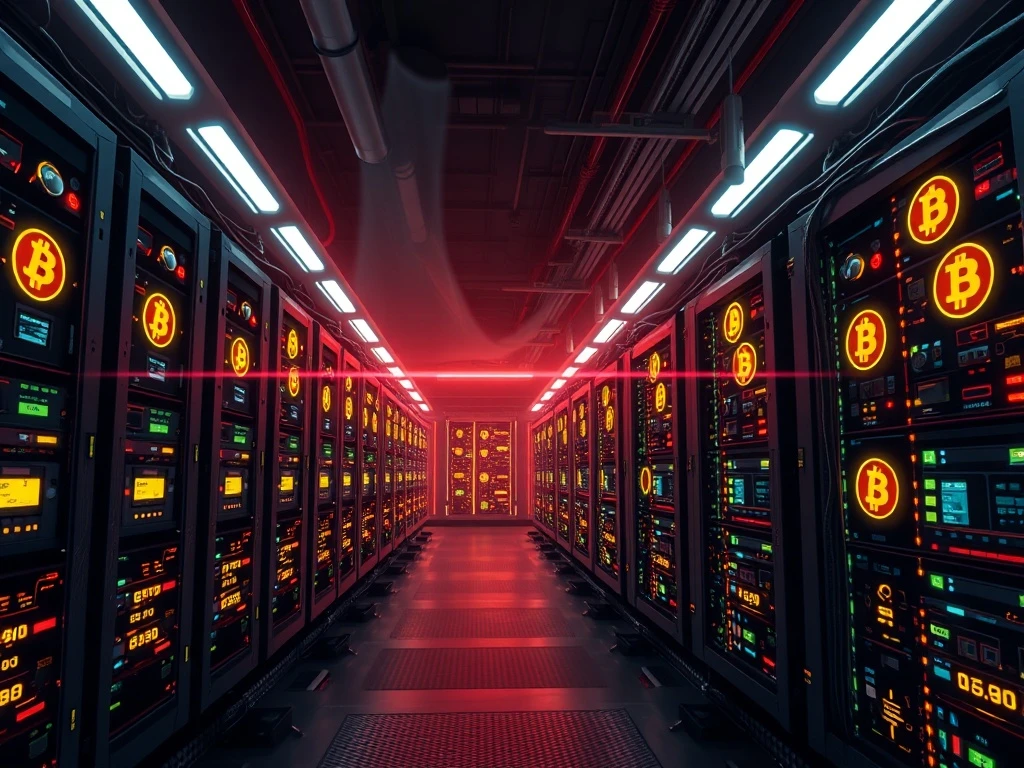Bitcoin Mining Crisis: Energy Consumption Soars 115% as Fee Revenue Collapses

Bitcoin mining is facing a critical challenge as energy consumption skyrockets while fee revenue hits record lows. This alarming trend raises serious questions about the sustainability of Bitcoin’s economic model. Let’s dive into the latest Bitcoin news and uncover what’s driving this crisis.
Bitcoin Mining Energy Consumption Reaches Unprecedented Levels
According to GoMining Institutional, Bitcoin’s energy usage has more than doubled in just 17 months, jumping from 15.6 GW in January 2024 to over 33 GW by mid-2025. This 115% surge comes despite significant improvements in mining hardware efficiency. The post-halving infrastructure expansion has created an energy demand that’s outpacing the network’s economic growth.
Why Is Bitcoin Mining Fee Revenue Plunging?
The first half of 2025 saw transaction fees drop to minimal levels, with users often paying just 1 satoshi per virtual byte. Key indicators of the fee crisis include:
- Seven-day average of daily transactions fell to 256,000 – lowest since October 2023
- Mempool completely emptied twice in 2025 – first time in nearly two years
- Miners increasingly dependent on block subsidies rather than transaction fees
Bitcoin Mining Difficulty: A Mixed Picture
While energy consumption surges, mining difficulty tells a different story. The network saw:
- Year-to-date increase of just 6.54% in 2025 (vs. 4.48% average in 2024)
- Sharp 7.48% drop in late April – steepest decline since July 2021
- All-time high of 126.98 trillion quickly followed by significant correction
The Looming Threat to Bitcoin’s Sustainability
With block subsidies halving every four years and fee revenue at record lows, Bitcoin mining faces an existential challenge. Environmental factors like extreme heat in U.S. mining regions compound the problem, forcing temporary hashrate reductions. The fundamental question remains: Can Bitcoin’s economic model support its energy-intensive infrastructure as rewards continue to decline?
Frequently Asked Questions
Q: How much has Bitcoin mining energy consumption increased?
A: Energy usage has surged 115% from 15.6 GW in January 2024 to over 33 GW by mid-2025.
Q: Why are Bitcoin transaction fees so low?
A: On-chain activity has weakened significantly, with blockspace demand dropping to levels not seen since October 2023.
Q: What happens when the mempool empties?
A: An empty mempool indicates very low network congestion, allowing transactions to be processed at minimal fees.
Q: How does this affect Bitcoin miners’ profitability?
A: With rising energy costs and declining fee revenue, miners face shrinking profit margins, especially as block subsidies continue to halve.









